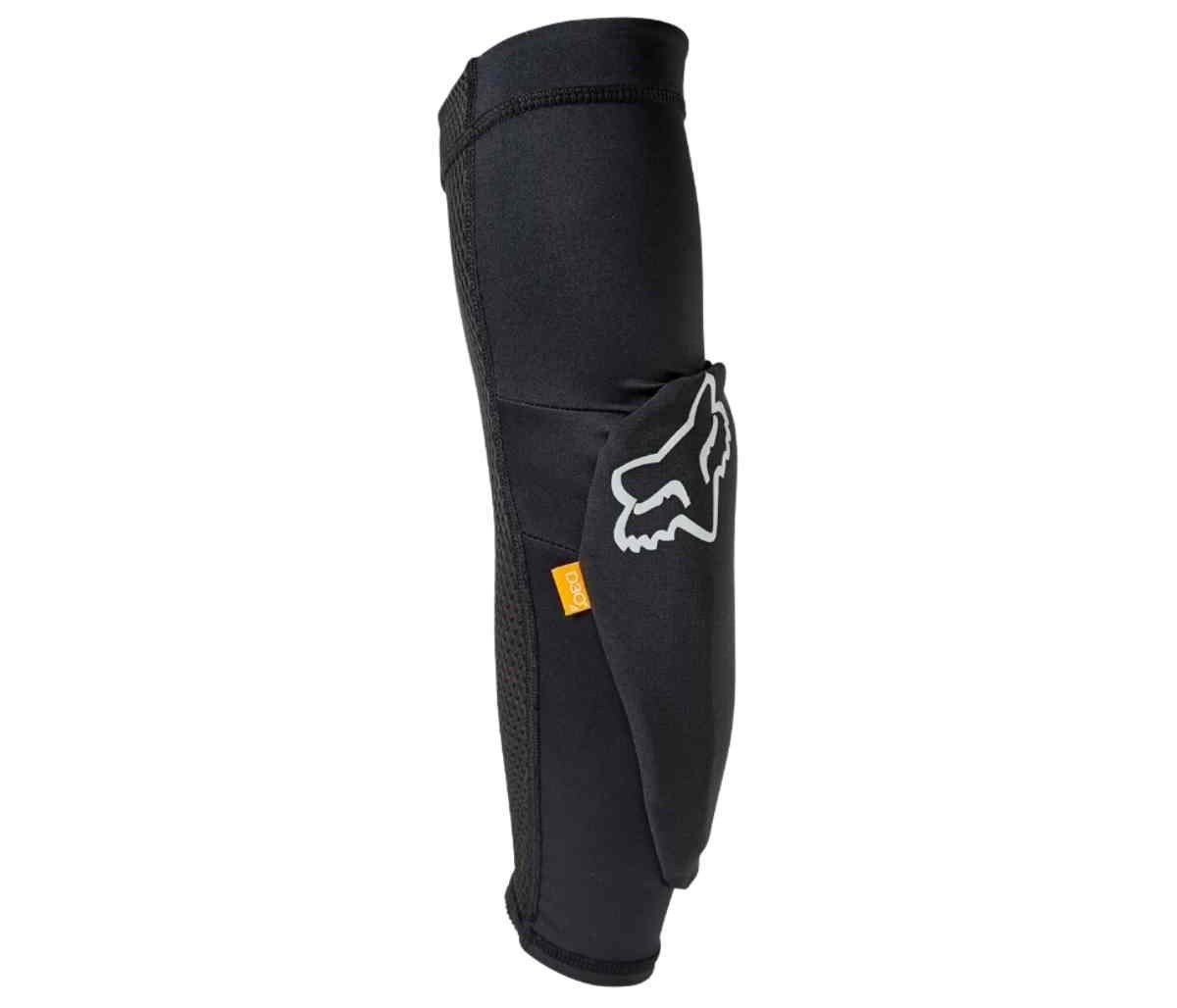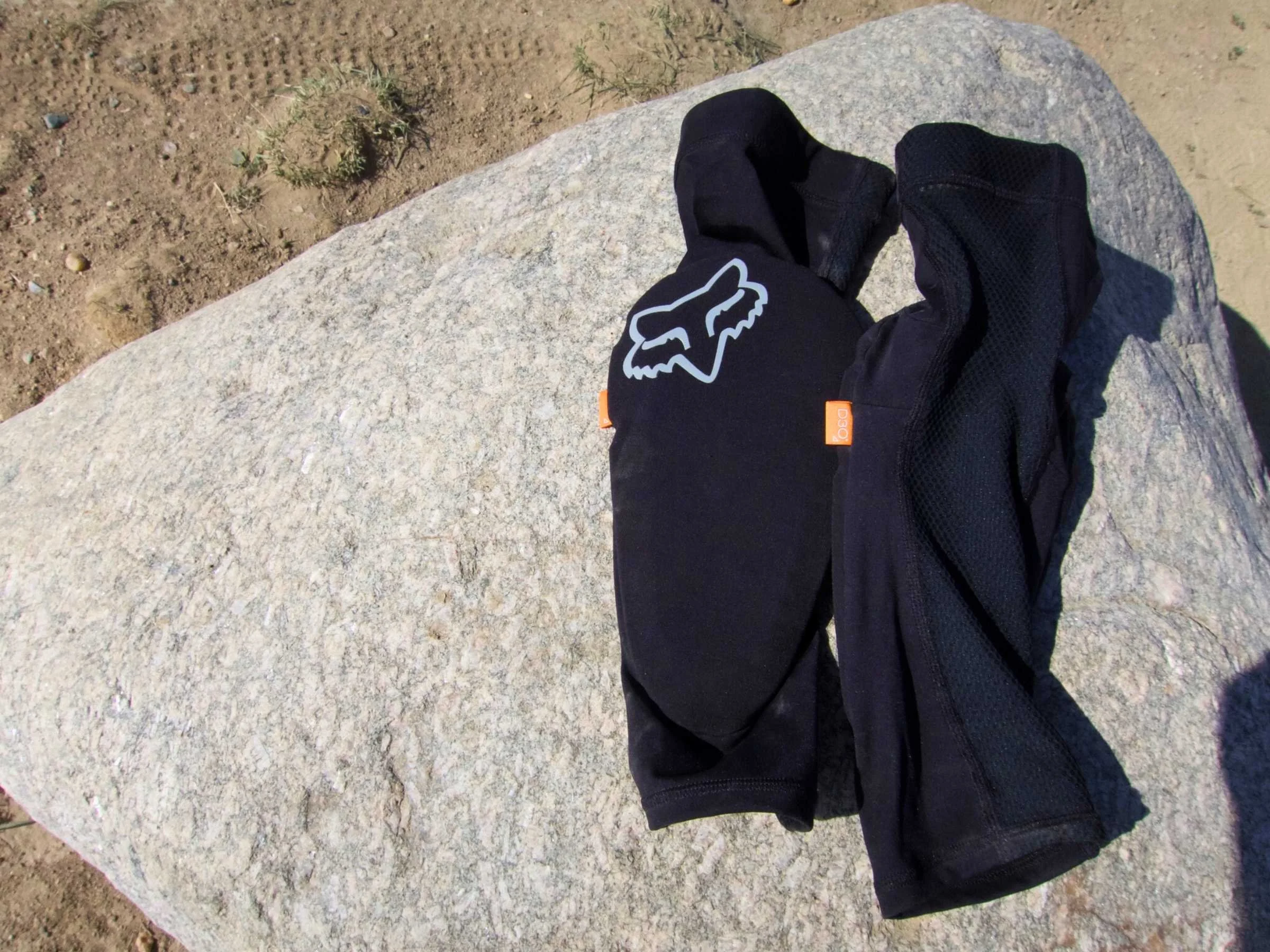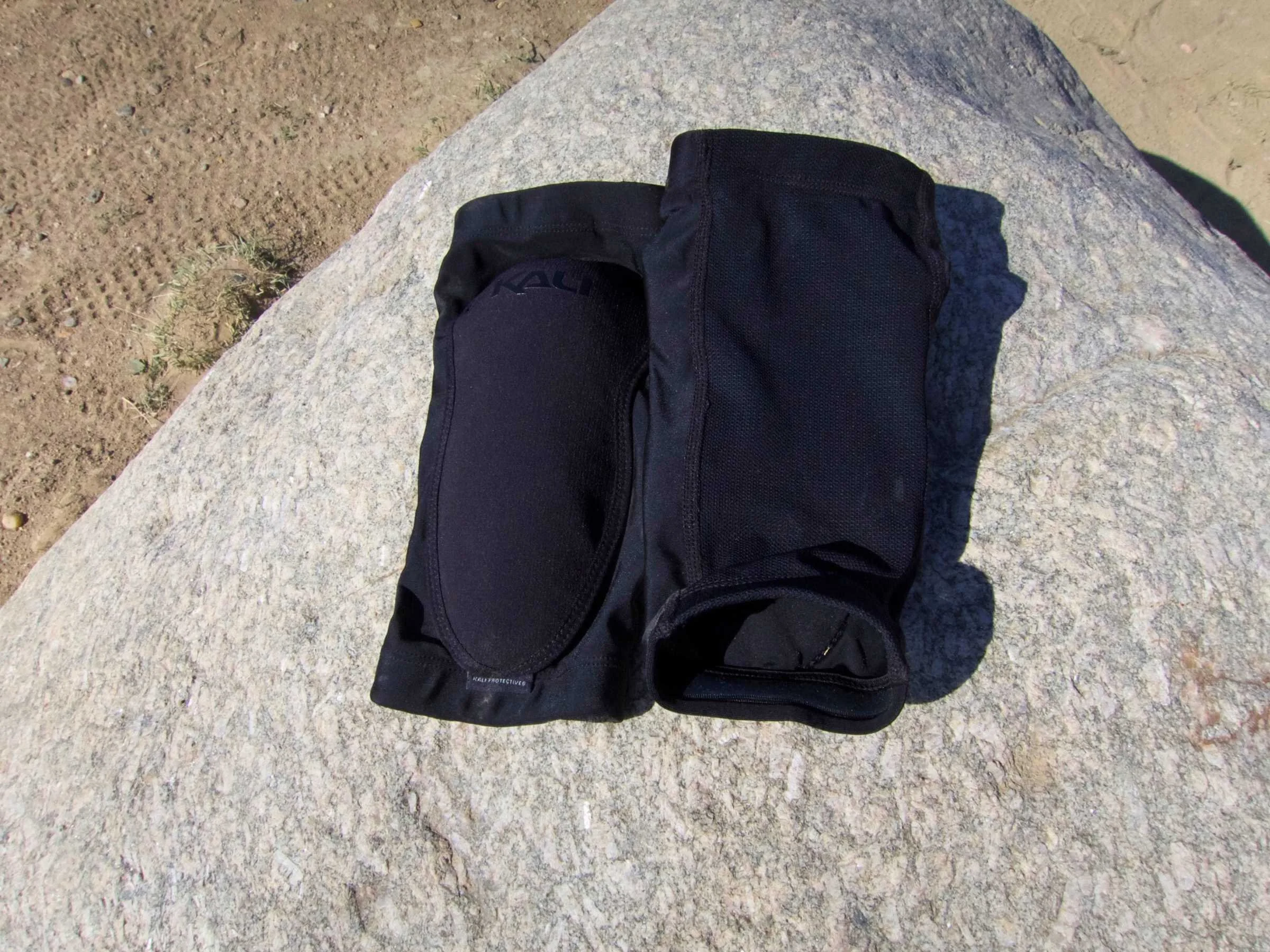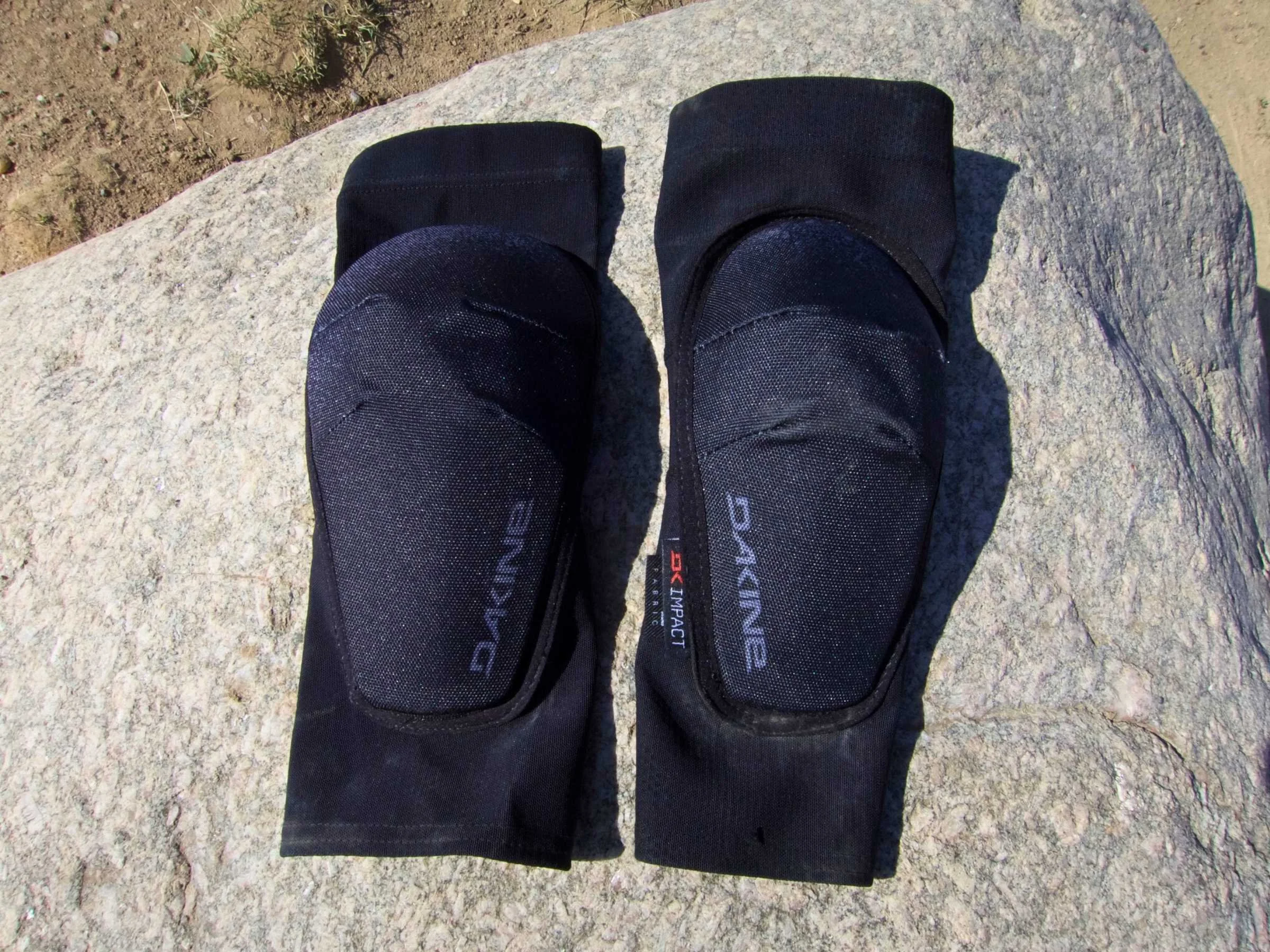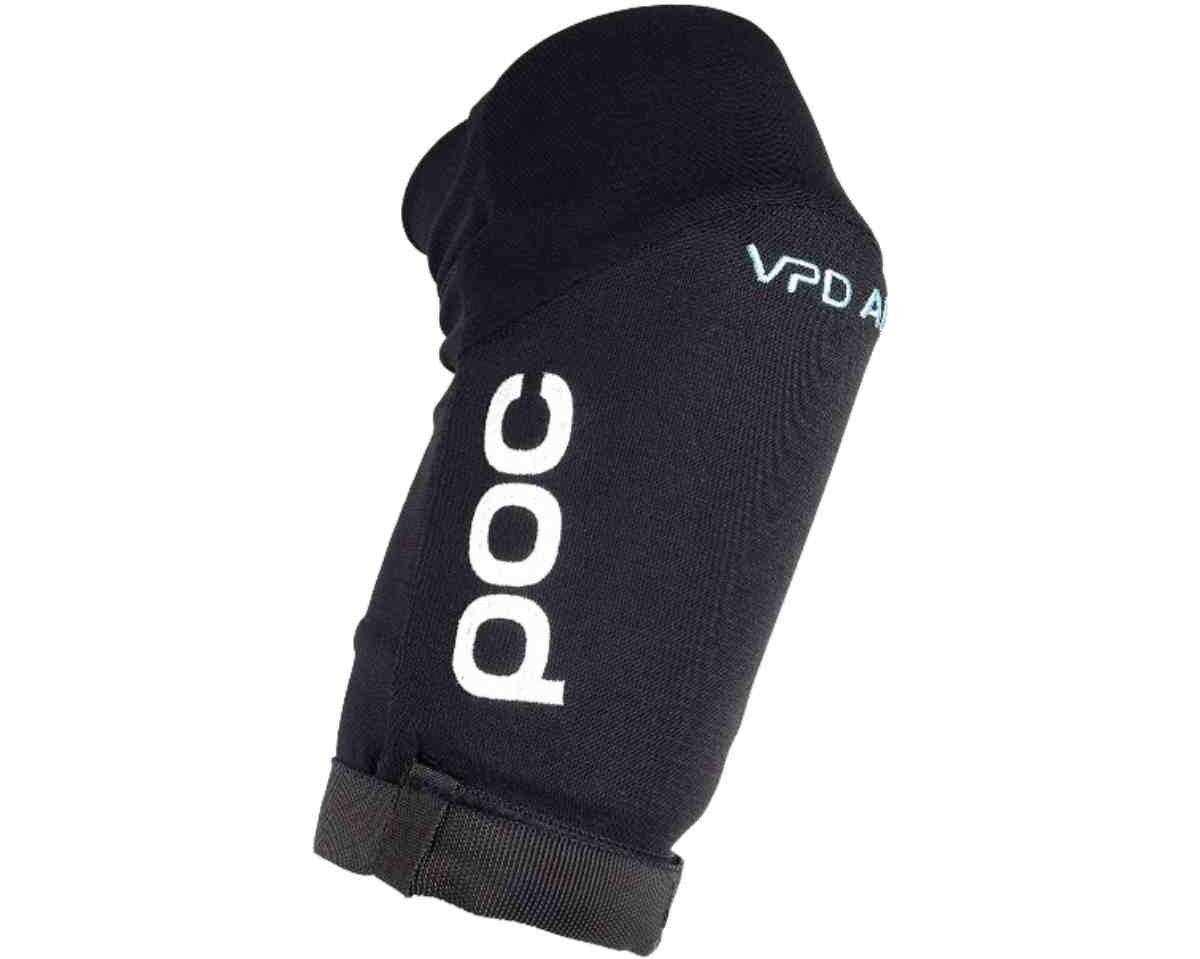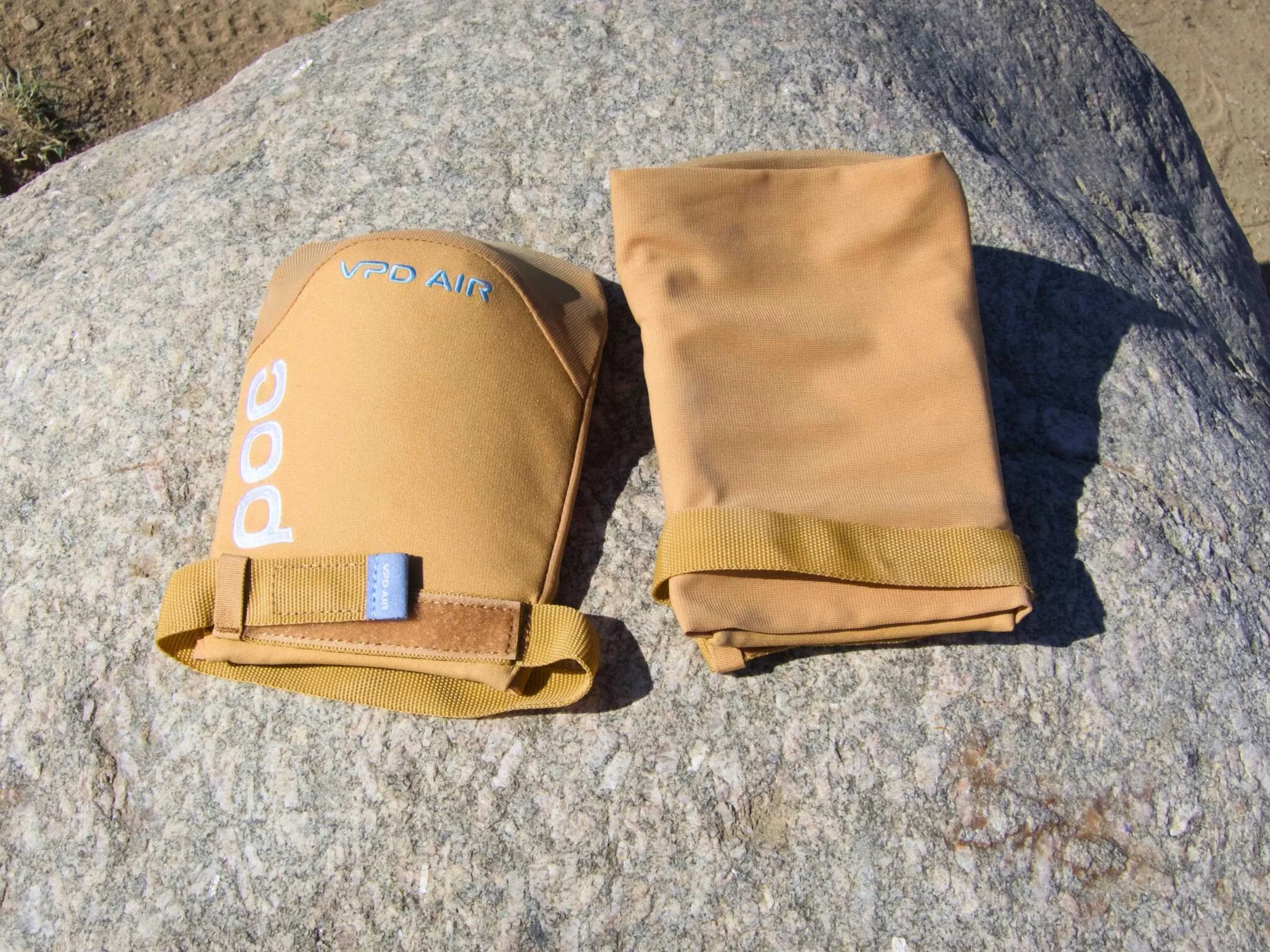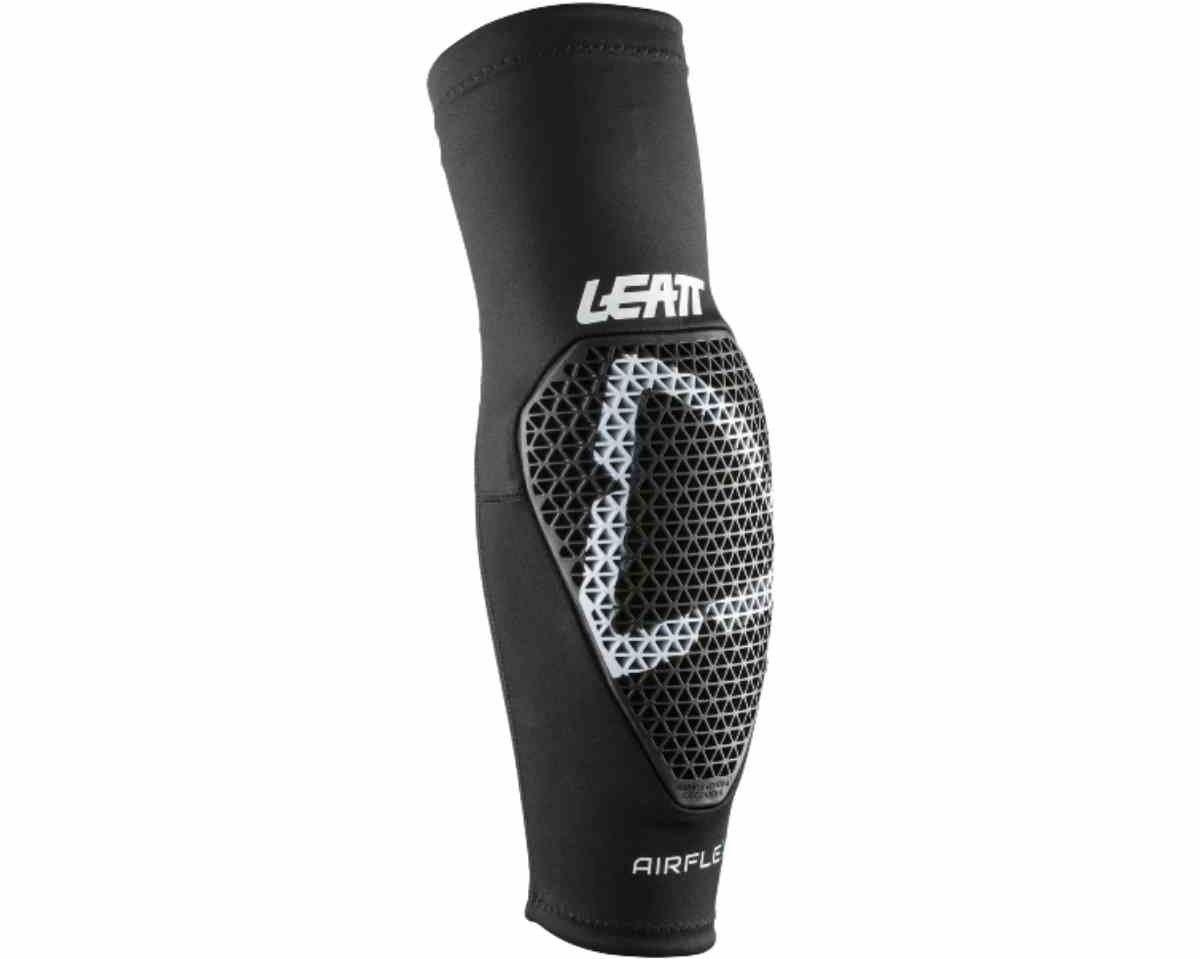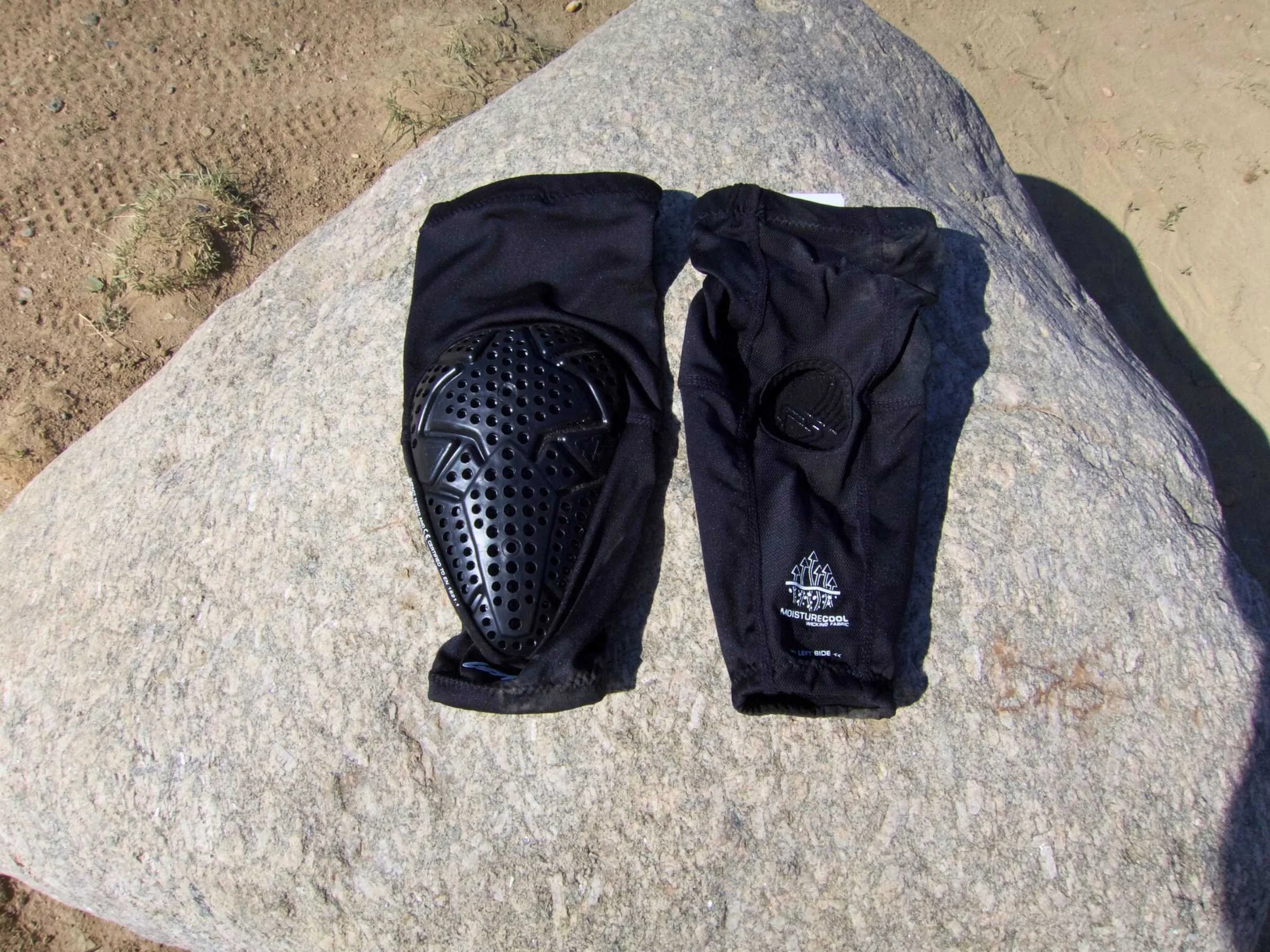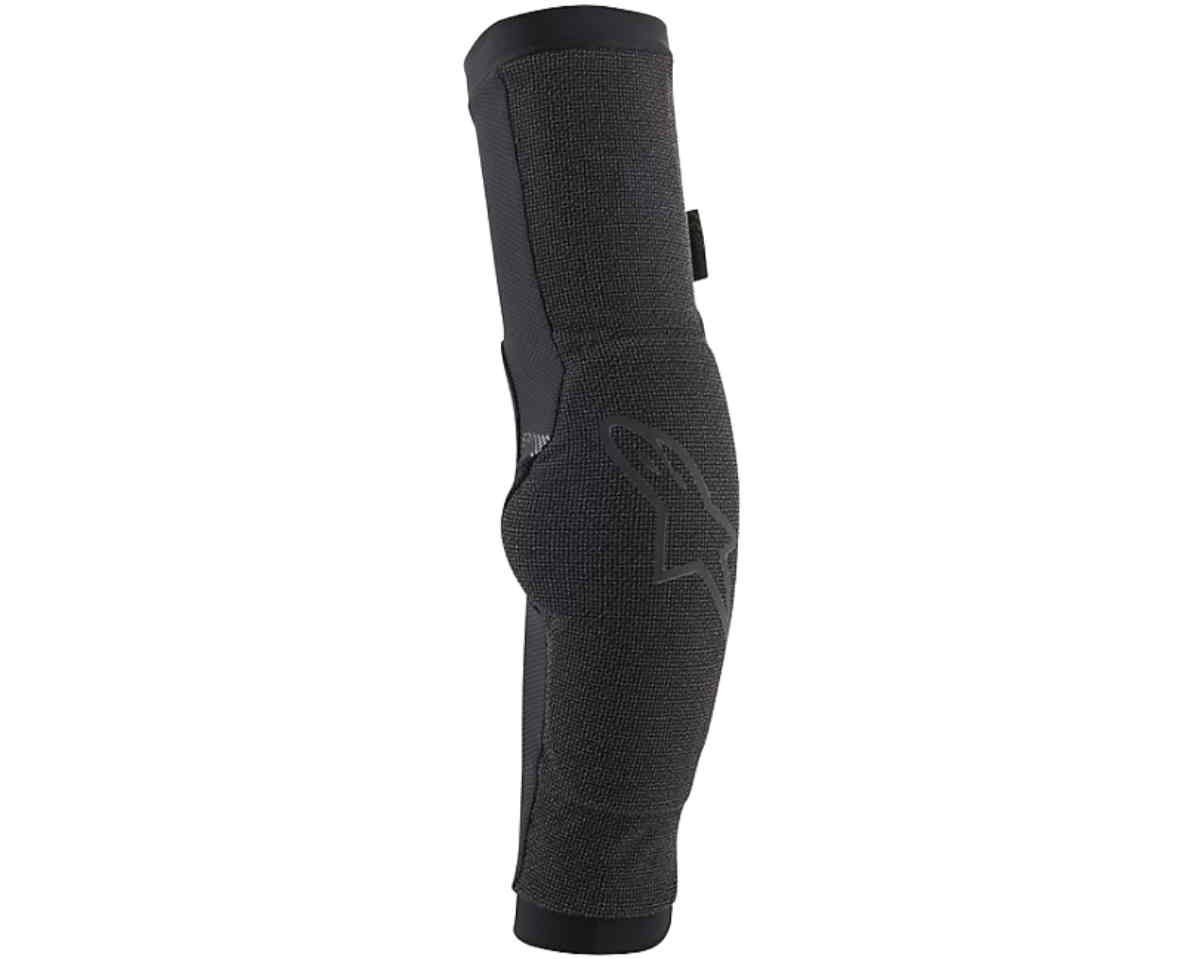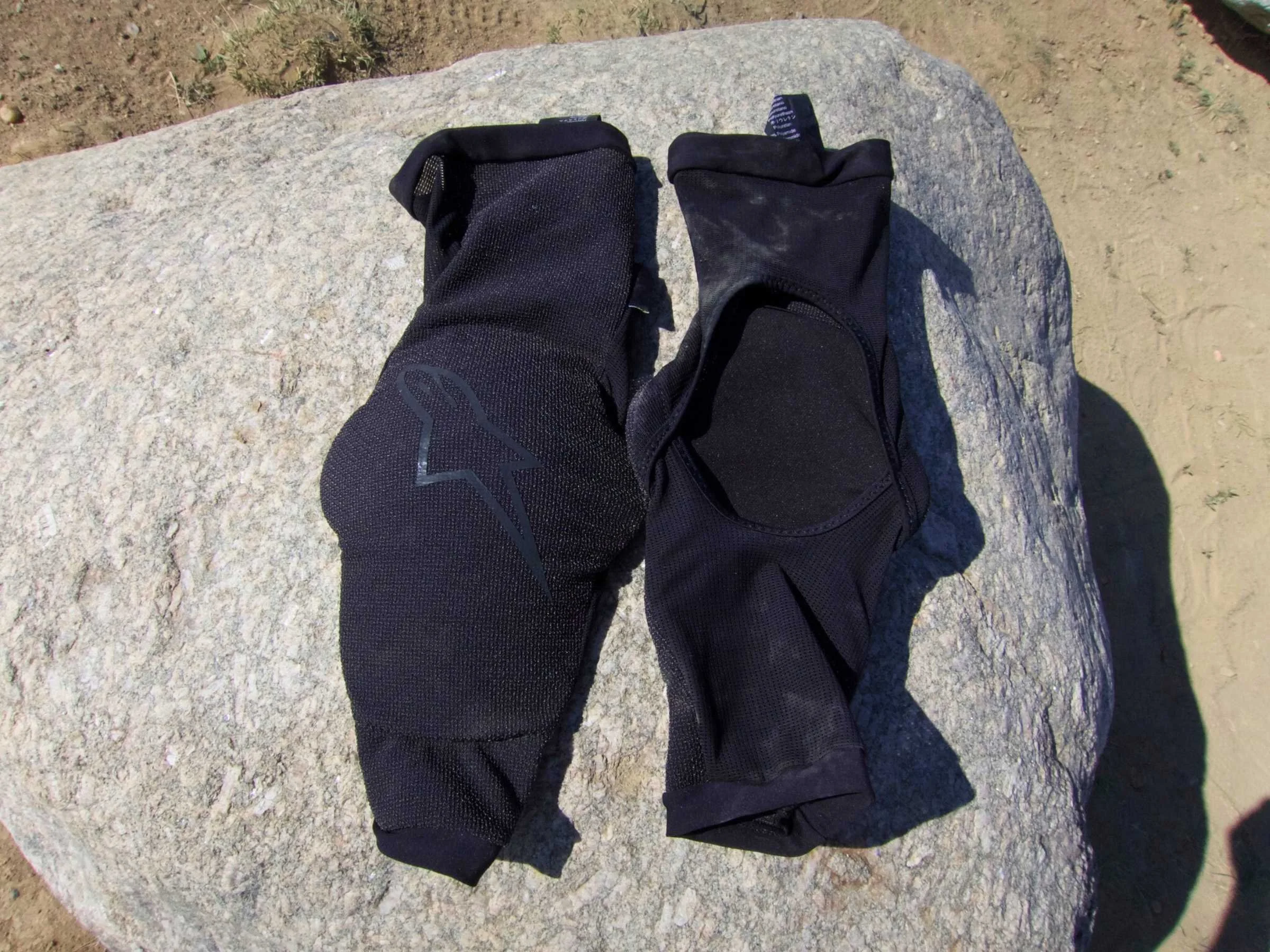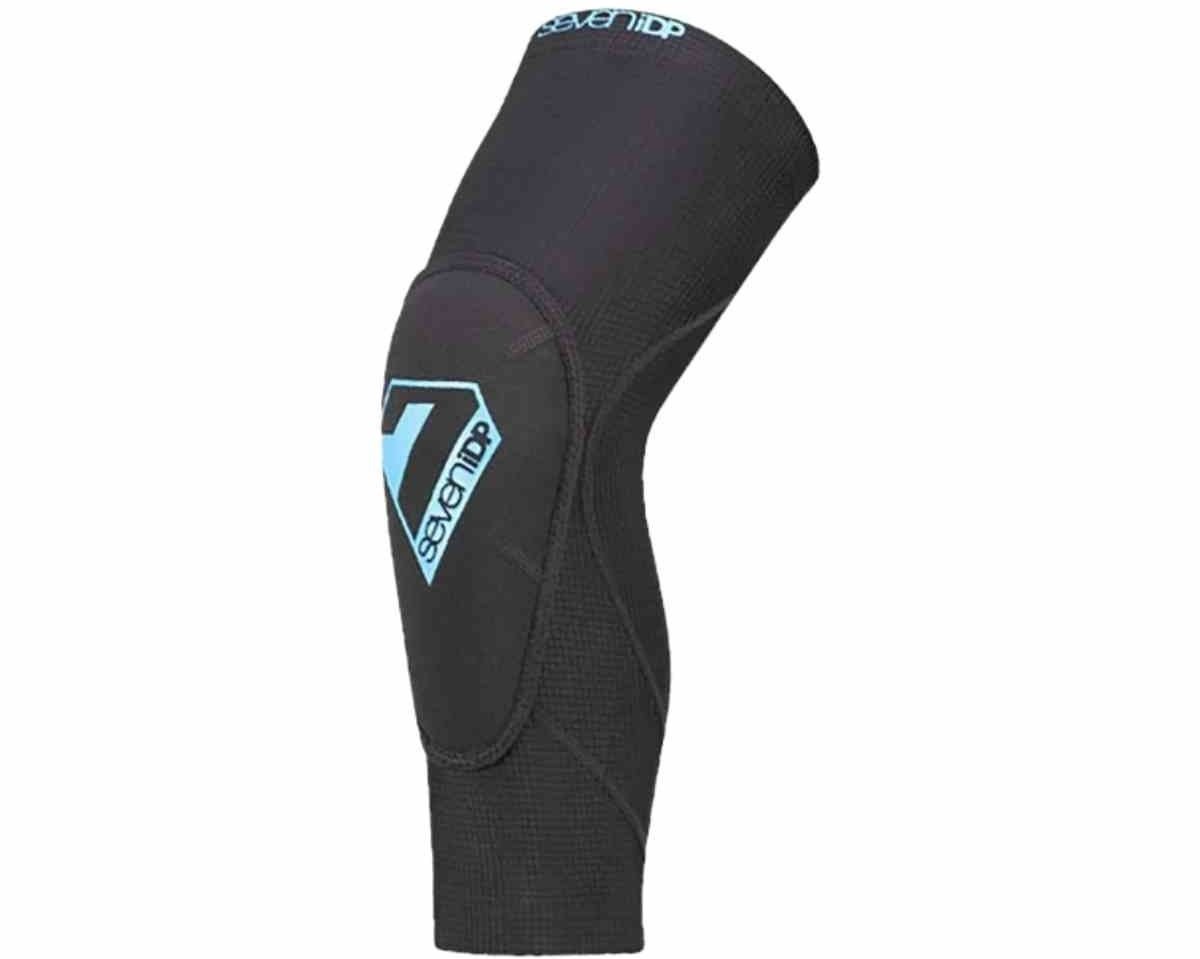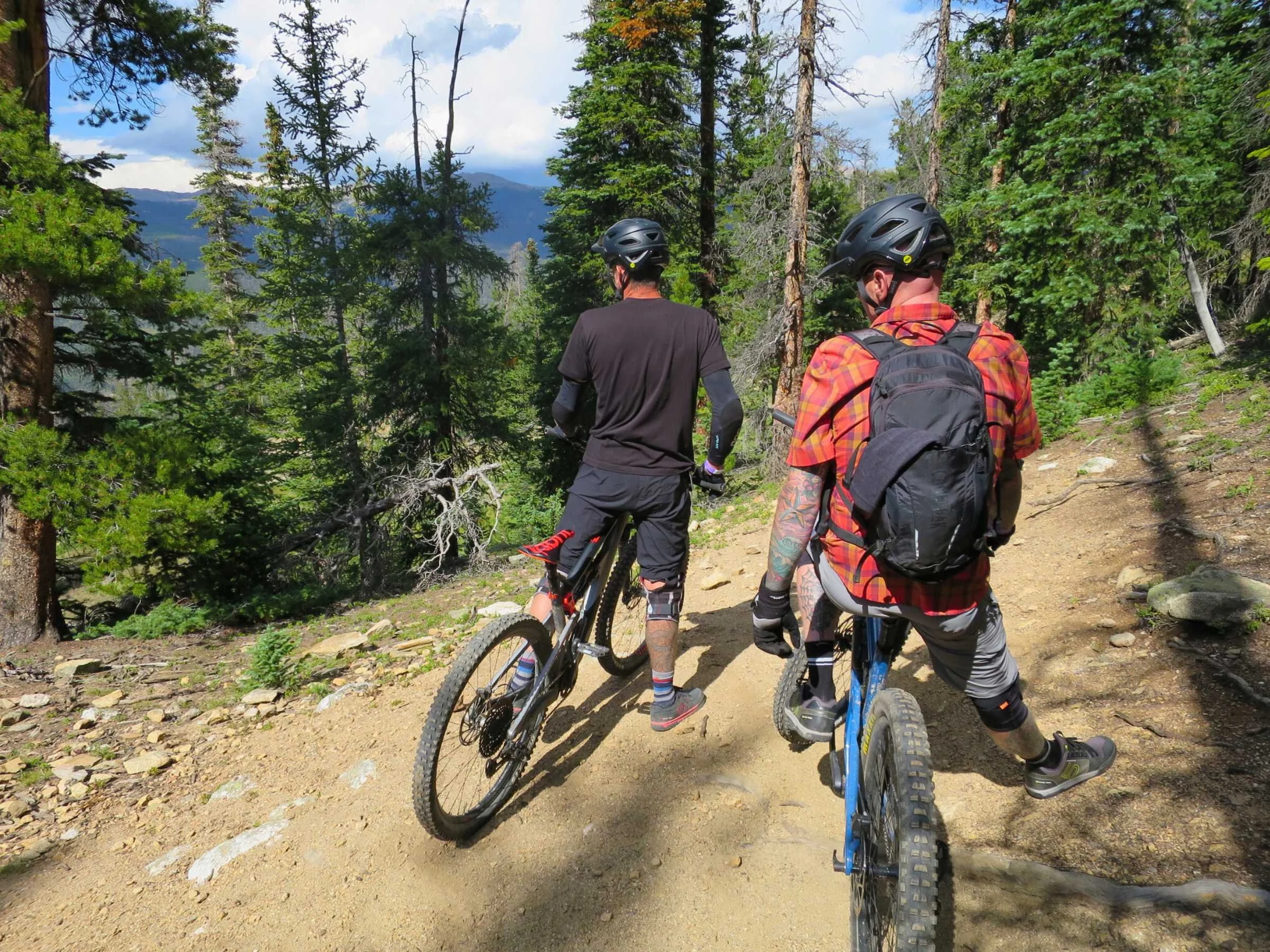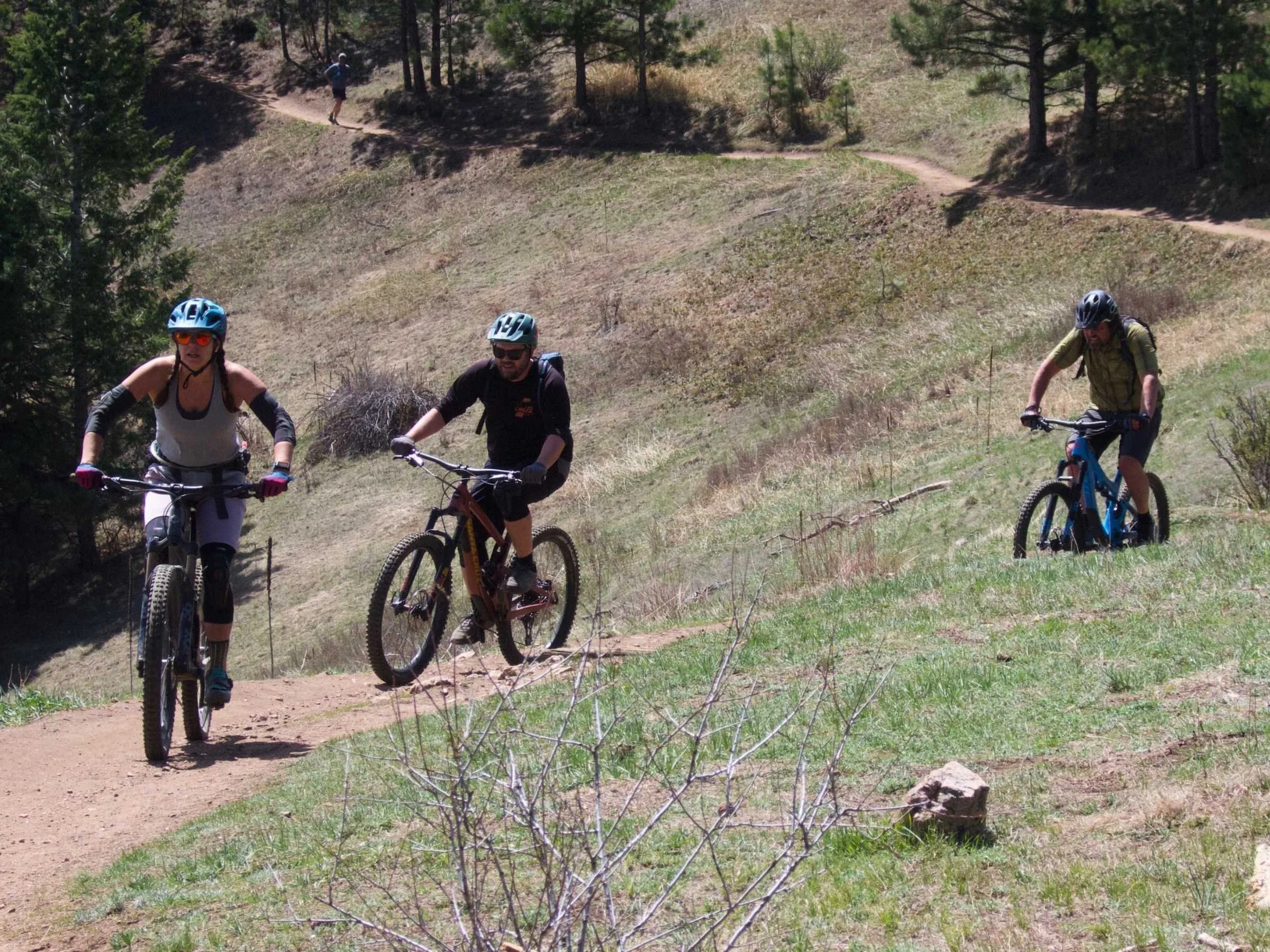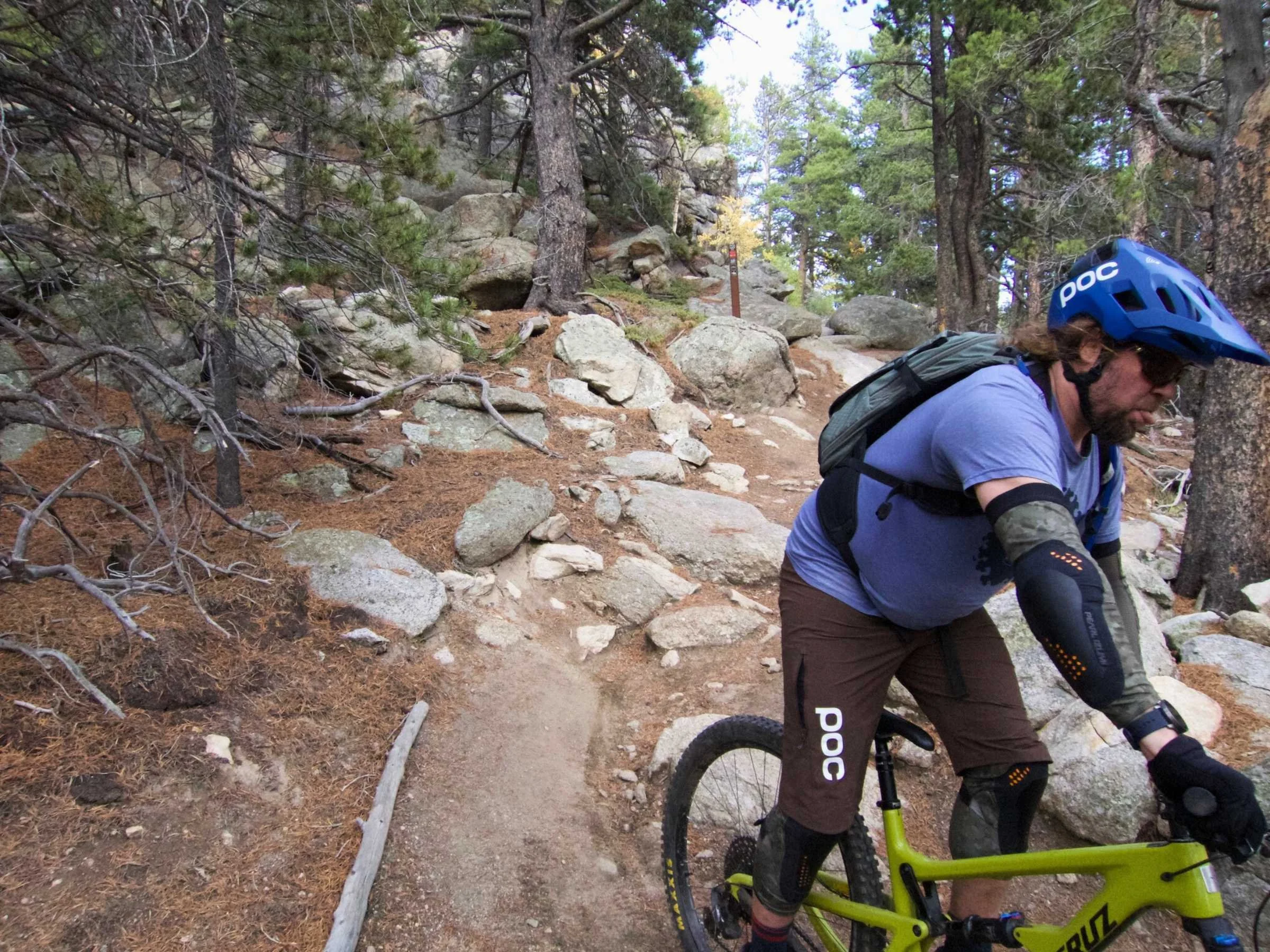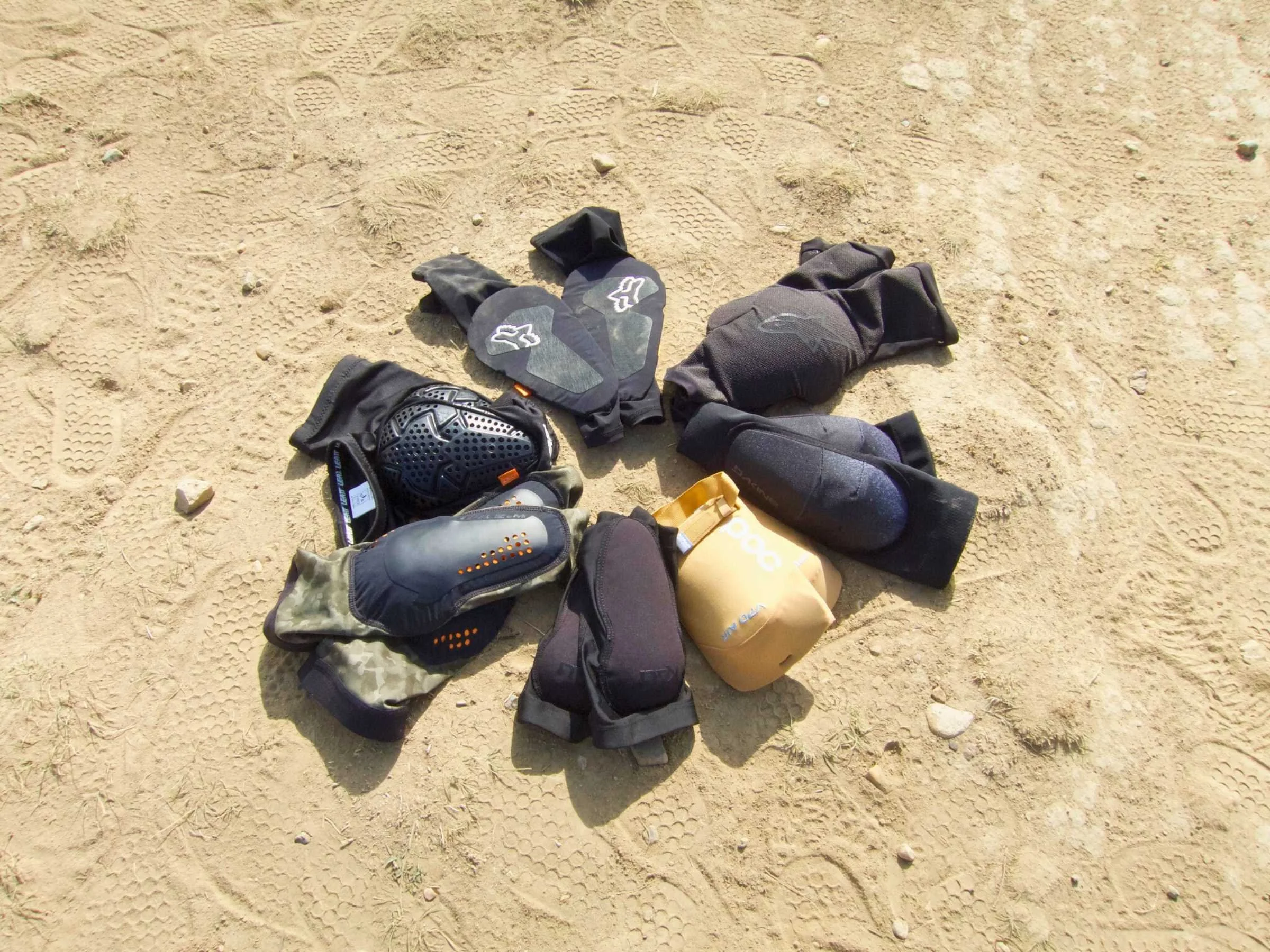Best MTB Elbow Pads of 2025 for All Types of Mountain Bikers
Mountain Biking Elbow Pads for trail, enduro, downhill, and cross country riders
September 25th, 2025, updated to add an FAQ section, remove discontinued products
Home > Gear Reviews > Bike
Elbow pads are a serious line of defense when mountain biking gets rough. They stop bruises, trail rash, and painful hits on twisted terrain—without adding bulk or slowing you down.
We started by reviewing dozens of top models and narrowed the field to the favorites. Then we hit real trail conditions—from downhill parks in Keystone to ride-outs with unexpected crashes—to test fit, comfort, breathability, and durability. Some pads even faced the edge of a tree or the force of a hammer to check if they’d stay protective through tough falls.
What stood out? We judged protection based on EN 1621-1 Level 1 standards, air flow and mesh breathability, staying power via silicone grippers, removable pads for easy washing, and the sleeves’ comfort across heat-filled rides. Pad thickness, sleeve length, and overall ride-friendliness mattered too—especially for different riding styles, from cross-country to downhill.
Top Pick: The Fox Enduro D30 Elbow Pads take our overall win. They feel lightweight and comfortable in every condition we tested, with long sleeves that protect from mid-bicep to wrist, snug grippers that don’t over-compress, and mesh venting that keeps them breathable on hot days. The removable D30 pad makes washing and replacement easy—so they last longer and stay fresh between rides.
Smashing your elbow into a tree or rock is no laughing matter, especially if you hit your funny bone. Elbow pads spare you from the pain—these are the best.
Related: Best MTB Knee Pads
We create reader-supported, objective gear reviews independently selected by our editors. This story may contain affiliate links, which help fund our website. When you click on the links to purchase gear, we may get a commission — without costing you an extra cent. Thank you for supporting our work and mission of outdoor coverage for every body! Learn more.
Best MTB Elbow Pad Comparison Table
| Elbow Pad | TREELINE AWARD | SIZES | WEIGHT | PADDING TYPE(S) | CERTIFICATION |
|---|---|---|---|---|---|
| Fox Enduro D30 Elbow Pads | Best Overall Read why |
XS-2XL | 9.3 oz. (XL), 8.6 oz. (L) | D30 | Level 1 |
| Kali Protectives Mission Elbow Pads | Best Trail/ Enduro Read why |
S-XL | 6.4 oz. | Polyurethane | Level 1 |
| Dakine Slayer Elbow Pad | Best Downhill Read why |
XXS-XL | 9.1 oz. (XL), 8.8 oz. (L) | Polyurethane | Level 1 |
| Pearl Izumi Elevate Elbow Guard | Best Cross Country Read why |
XS-XL | 9.8 oz. | D30 | Level 1 |
* We note any discounts we see on our Deals page, which is updated daily.
See our most popular mountain bike guides in our Bike gear section:
Best MTB Elbow Pads
Best Overall: Fox Enduro D30 Elbow Pads
Sizes: XS-2XL
Weight: 9.3 oz. (XL)
Padding Type: D30
Certification: Level 1
What we liked: Removable pad makes it easier to wash, good arm coverage.
What we didn’t: Sleeve might be too long for some. Not thick enough padding for downhill purists.
The Fox Enduro D30 Elbow Pads are our overall winner for best mountain biking elbow pads. After testing many models for months, these are the pads that we slip into our backpack before every ride. They feel lightweight compared to other pads. They are definitely the most comfortable. The sleeve is long enough to provide extra protection of the arm up to the middle of the bicep and almost to the wrist. That provides extra protection from scrapes in the event of a crash.
We also found the silicone grippers at the top of the sleeve kept the pads firmly in place without providing so much compression that it caused early fatigue when hammering down Keystone Ski Resort’s downhill bike trails, like some of the others we tested. We definitely noticed that the compression caused by some other pads did lead to earlier fatigue.
Compare Prices Of The Fox Enduro D30 Elbow Pads
The Fox Enduro D30 were our favorite pair of elbow pads, meeting almost all of our needs.
-
We also appreciated the mesh panels on the inside of Fox Enduro elbow sleeve, which ensure it breathes well even on the hottest of days, like a July day at Golden Gate Canyon State Park when the mercury was well north of 90. The D30 foam inserts are designed in a way that makes them easy to conform to your arm no matter how much it’s bent without feeling uncomfortable. They’re removable for washing and replaceable if they get damaged, which makes the sleeves slightly more sustainable in case the dog has a hankering for foam and gets into your pads.
-
These were among the most reviewed pads we saw, with 5 publications recommending them and they have received 4.7 out of 5 stars from over 600 Amazon reviewers. “While the thin integrated pad isn’t pre-shaped, it’s flexible, moulds to the shape of your arm well and offers decent protection for trail riding,” BikeRadar writes in its review. "With a slim profile, they fit subtly under a jersey or easily in your pack, but we found that the cuffs pinched and the tight fit started to fatigue our arms on longer rides.”
In our testing we didn’t have the same problem and found they were among the best fitting, and most functional elbow pads for a range of riders. As such, they are our pick for best overall.
Best Cross Country: Kali Protectives Mission Elbow Pads
Sizes: S-XL
Weight: 6.4 oz.
Padding Type: Polyurethane
Certification: Level 1
What we liked: Great price, lightweight and breathable, good protective coverage.
What we didn’t: Sleeve might be too short for some. Not suitable for downhill rides.
The Kali Protectives Mission Elbow Pads are among the shorter-sleeved pads we tested. That makes them a good option for cross country riding, where elbow pads aren’t needed as much and having a small pair to stow in your pack for gnarly sections is still nice. They’re also amongst the least expensive, making them a great value for a Level 1 protector for as low as $27.
Compare Prices Of The Kali Protectives Mission Elbow Pads
The Kali Protectives Mission Elbow pads had a shorter sleeve than most and were light and comfortable.
-
The silicon grippers on the forearm and just below the bicep kept the preformed polyurethane elbow cup in place while jostling down the technical sections of Mustang Longhorn trails at White Ranch.
-
The mesh panel inside the sleeve breathed well, and kept us from feeling too sweaty on hot fall days. The foam is a little thicker than on some of the options tested, like the Fox Racing Enduro pads, but still conformed to our arms well, without impeding movement.
Best Downhill: Dakine Slayer Elbow Pad
Sizes: XXS-XL
Weight: 9.1 oz. (XL)
Padding Type: Polyurethane
Certification: Level 1
What we liked: Durable, heavy duty protection for downhill rides.
What we didn’t: Burly design feels heavy, doesn’t conform to arm as well and sizing issues.
These were, by far, the burliest mountain biking elbow pads we tested. With Dakine’s DK Impact foam and Cordura fabrics they had the thickest foam and fabric of any of the elbow pads we tested. We were confident in these when riding the mountain bike trails at Sunset Open Space and weren’t afraid of falling after a jump and would turn to these pads for more serious downhill riding as well.
Compare Prices Of The Dakine Slayer Elbow Pad
The Dakine Slayer elbow pads are best suited for the heavy duty work of downhilling. Here you can see the obvious size difference between the XL (left) and Large(R).
-
However, there’s a drawback to burly. It’s less comfortable than other pads to wear as the thick, protective elbow cup sits atop the elbow, making it a sort of shock absorbing spring. It doesn’t conform to the arm as well and it’s more noticeable on the arm than pads with lighter fabrics. As such we’d only recommend them for downhill duty.
-
Still, for downhill, we’d trust these. “The DK impact polyurethane foam acts as a shock absorber, preventing serious elbow injuries. In addition, the stretchable extended mesh material will fit you perfectly without sliding down. In addition, these breathable elbow pads are ideal for tough terrain,” MomJunction says in its review of the pads.
-
They also aren’t as forgiving in their sizing as other models. We weren’t even able to fit the large over our forearm. As we mention elsewhere, it’s always best to try pads on in person before buying, and that’s certainly true with these. If you buy them online, make sure it’s from a retailer with a good return policy as these are less forgiving in sizing differences than other pads.
Best Trail/Enduro: Pearl Izumi Elevate Elbow Guard
Sizes: XS-XL
Weight: 9.8 oz.
Padding Type: D30
Certification: Level 1
What we liked: Comfortable pads, removable, stayed in place well.
What we didn’t: Expensive, not as comfortable as Fox’s Enduro pads, sleeve might be too long for some.
The Pearl Izumi Elevate Elbow guard is among the most comfortable we tested, edged out only by Fox’s Enduro pads. They offer more sleeve coverage and padding coverage than the Enduro pads. They were great on days at Staunton State Park, where we ripped down sandy switchbacks with confidence and didn’t experience any slippage.
Compare Prices Of The Pearl Izumi Elevate Elbow Guard
The Pearl Izumi Elevate were great for cross country riders since they were breezy and light on our arms.
-
The sleeves on the Pearl Izumi Elevate were among the highest we tested covering most of the bicep and stayed in place well thanks to silicon grippers at the top. The preformed D30 pads are removable and a little thicker and larger than the Enduros. They provide padded coverage to just about 2 inches above the wrist, which is great if someone really wants that extra sleeve length to protect against any trail crash rash, but gets too close to a smartwatch or jacket cuff in some instances.
Other MTB elbow pads we tested
POC Joint VPD Air Elbow Pads
Sizes: XS-XL
Weight: 7.1 oz.
Padding Type: VPD Compound
Certification: Level 1
Though we liked the POC Joint VPD Air Elbow Pads, they didn’t provide as much additional coverage in the form of a sleeve. Since the padding on the Joint VPD takes up the entirety of the pad, the closest comparison is the Kali Protectives Mission sleeve, which has about an inch of sleeve on the bottom and an inch and a half or 2 inches of sleeve on the top. We also found that while the Joint VPD breathed well, they didn’t conform to the arm as well as other models tested.
Compare Prices Of The POC Joint VPD Air Elbow Pads
The POC JOINT VPD Air elbow pads offered great protection of the elbow itself, but had no sleeve extending protection.
Still, others rate them favorably, with Bike Test Reviews noting: “ Another great pair of minimal elbow pads is the VPD Joint pads from POC. These slimmed down elbow pads offer a good balance between adequate abrasion protection and a low-profile design that will fit well under riding clothing and feels comfortable enough to wear on all-day rides.”
We somewhat disagree. All the other models, with the exception of the Dakine Slayers and Alpinestars Paragon Pros we tested conformed to our arms better and would fit better under clothing.
Sizes: S-XXL
Weight: 7.4 oz.
Padding Type: 3D-shaped impact gel
Certification: Level 1
The Leatt AirFlex Pro Knee Pads were our overall favorite in our Best MTB Knee Pads guide. We can’t say that about the Leatt AirFlex Elbow Pads. On multiple crashes, while trialing on trails systems like Lunchbox Loops in Colorado, they saved our knees from bruises and scrapes.
The AirFlex Elbow Guard is made of similar materials and has a similar design. However, our test pair was large and slipped easily down one arm. This is strange as the Leatt AirFlex knee pads stayed in place and we never had issues with them slipping off.
View The Leatt Airflex Elbow Guard
The Leatt AirFlex Elbow pads we tested appeared to be an older model and their fit was not true to size in testing.
Sizes: 2XS-2XL
Weight: 8.6 oz.
Padding Type: Polyurethane
Certification: Level 1
The Alpinestars Paragon Pro Elbow Protectors were among the least comfortable pads we tested.
Though the preformed polyurethane foam was thinner than other models, it wasn’t as flexible and it hardly conformed to the elbow at all. As such the knobby part of our elbow was in constant contact with the pad.
The pad barely covered anything above the elbow and we also found that the sleeves extended higher on the bicep than the rest but didn’t stay up as well as other models.
VIEW THE ALPINESTARS PARAGON PRO ELBOW PROTECTOR
The foam pads on Alpinestars Paragon Pro pads did not conform to our arms or movements.
Sizes: S-XL
Weight: N/A
Padding Type: Impact foam
Certification: Level 1
We didn’t have a chance to test these well-regarded, light elbow pads. However, BikeRadar notes: “The 6mm-thick elbow cup balances slimness with protection, and it’s made from an articulated and very mouldable rubber, so the fit is great.” As such we think this could be a great pad for enduro and trail riding and perhaps even cross country riding, depending on the weight and overall length of the pad.
Compare Prices Of The 7Idp Sam Hill Lite Elbow
Sizes: XS-2XL
Weight: N/A
Padding Type: D30
Certification: Level 1
Another elbow we didn’t have a chance to sample was the Troy Lee Design Speed sleeve, which could have contended for the best cross country elbow pad. Multiple reviews praised them for their breathability and comfort.
“Because they’re so comfy, we’ve found ourselves wearing these pads more often, making them more likely to save our elbows than a bulkier, more protective set. The full-length sleeve has just the right stretch, so they stay up without feeling too tight,” proffers BikeRadar.
We also noted, as others had, that the 4mm thickness of the D30 material in the Troy Lee pad won’t be enough to protect in a serious crash on harsh terrain. Still, for a lightweight, easy to wear and cover pair of mountain biking pads, this is a pair worth checking out.
Compare Prices Of The Troy Lee Designs Speed
Sizes: S-L
Weight: N/A
Padding Type: D30, Plastic cap
Certification: Level 1
The Fox Racing Launch is a heavier duty pad than the Fox Racing Enduro line, making them more ideal for maximum protection needed when downhill riding. The Pro version adds a plastic cap to the thicker D30 padding in the Launch.
“If you want a pull-on pad that isn’t bulky and works for all-day riding, but you want a bit more protection than most of the elbow sleeves on the market, then you can’t beat the Fox Launch D30,” says Bike Perfect. “In addition to the main pad there are several smaller peripheral pads that provide good protection all around the elbow as well as straight on.”
Compare Prices Of The Fox Launch D30 Pro Elbow Guards
Testing the Kali Protectives Mission elbow pads at White Ranch. We liked the size and shape of these pads.
Why you need elbow pads
Modern elbow pads and knee pads are more protective yet lighter than ever before thanks to novel materials like D30. Still, there are still many things to consider with elbow pads. Unless you’re riding on a particularly frigid day and need a little extra warmth, no one really wants to wear elbow pads all day.
But when it comes to tricky downhill sections, elbow pads are a must. If you’re only hitting a few obstacles here and there on your downhills, like an easy blue (intermediate) trail, you’ll likely want a light sleeve with padding for the tough spots. If you’re a bare-knuckle adrenaline-junkie who thrives on crashing through the forest and jumping off the berms and wooden features at downhill courses on ski slopes in the summer, you’ll want a beefier pad, sometimes with Level 2 protection (more on that below).
Pro tip: Mountain bike glasses and elbow pads are essential protective gear when tackling technical singletrack, where both crashes and flying debris pose real threats to your safety.
Here we delve into the subtle, yet important differences, in the types of pads and what the different levels of MTB protection mean.
Evaluating the next trail at Keystone while testing elbow pads.
Types of MTB Elbow pads
Different mountain bike elbow pads are intended for different purposes. However, there’s a fair amount of overlap between the categories. There are only two levels of certified protection for knee pads and elbow pads, EN1621-1 CE Level 1 and EN1621-1 CE Level 2, which we’ll explain a little more below. In the meantime, here are the broad strokes of the different types of elbow pads.
Cross Country
These are the lightest and least protective elbow pads and the most wear friendly. Cross Country elbow pads or elbow sleeves, offer limited protection and are meant for riders who only need pads for short sections of the ride and for riders who need pads with maximum ventilation.
Mary Beth climbing Apex in elbow pads. Not all riders choose to go up in elbow pads.
Enduro/Trail
Most riders will want enduro or trail-style elbow pads. These are comfortable and most will offer at least Level 1 protection. They should stay in place thanks to grippers on the on or near the bicep and possibly on the forearms. Many of these pads will use a thicker foam or viscoelastic material to provide protection yet are still wear friendly. This is similar to the thicker foam or viscoelastic material found in enduro or trail knee pads.
Downhill
Downhill elbow pads offer the most protection. They’re designed for harder crashes, bigger impact absorption, like those resulting in a tumble off a double-black trail. They’re not necessarily as comfortable or as vented as other options. They often have a strap to keep them from falling or jostling around on trails. Some of these pads are soft, with thicker layers of foam, while others have hard plastic caps on them to provide better protection. The best downhill pads, like most downhill knee pads, offer Level 2 protection.
What to look for in MTB elbow pads
Choosing a mountain biking elbow pad that meets the needs of your riding style is the most important thing to consider. These are the other aspects to be aware of.
Materials
Most materials in an elbow pad consist of an elastic sleeve and padding materials. Many models tested also included stretch-mesh panels on the insider of the elbow to keep you from sweating too much while wearing them. All the models tested had rubber or silicone grippers, and some use a velcro strap to ensure they stayed in place even more. If they have a strap it’s important to not strap them too tightly as it can cause numbness and impact your riding ability. These principles are similar when consider knee pads.
Protection
All the pads tested use some sort of padding for protection. Some use polyurethane foams while others use multiple types of foams or foam treatments like D30 and/or hard plastics to increase protection (more on that below). These are the same materials found in mountain bike knee pads as well.
Some pads like these Fox Enduro’s have removable D30 inserts.
Removable Pads
Some pads, like the Fox Enduro Elbow Pads, have removable pads. This makes it easier to wash them and to replace a broken or damaged pad. Others have pads stitched into the elbow pad. We didn’t have any problems with either style of attachment.
Plastic Cap
Some pads have a hard plastic cap on them. WIn this round we didn’t test any of them because research shows that modern viscoelastic materials actually offer better impact protection than hard plastic shells.
Non-Newtonian Materials and Impact
Most pads we tested use D30, a phase-changing viscoelastic or non-Newtonian material. Under normal use, it’s a lightweight foam that moves easily as you bend your elbows and move. However, when impacted, it hardens automatically, protecting the elbow and just as quickly returns to its soft state after the impact.
The best way to understand it is using the example of oobleck—cornstarch and water. It acts like a liquid until you apply pressure, then it acts more like a solid. Here’s a fun Science Channel video of people running and biking across an oobleck pool to help demonstrate how it works:
What Kind of Liquid Lets You Run Across Its Surface? | Street Science
D30 is also found in mountain bike knee pads.
Impact (EN1621-1) Certifications:
There are two primary levels of padding certifications used for classifying mountain bike elbow pads and knee pads. They’re both EN (European Norm) 1621-1 standards that meet one of two CE (European Conformity) levels of certification for joint protection. To test impact resistance, they drop a 5-kilogram mass (about 11 pounds) on the pads and measure how many kiloNewtons (kN) are transmitted through it nine times over a small impact area. Essentially, elbow and knee pads have to take the impact of a two-finger punch from a hulk-sized Bruce Lee and reduce it to less deadly levels. Check out this Wikipedia article on motorcycle armor for more information.
CE Level 1 is a lighter protective pad. Less than 35 kNs of force are transmitted through the pad.
CE Level 2 is a more protective pad. Less than 20 kNs of force are transmitted through the pad.
Sleeve Length
We tested large and extra large elbow pads that had almost no sleeve and were as short as 7.5” and just over the elbow with almost no sleeve (POC VPD Air). On the other end of the spectrum, we tested pads with sleeves as long as16” (Alpinestars Paragon Pro), which almost tickled our armpits.
Ultimately, we found a length a little shorter than a foot, offered enough coverage and padding to keep most pads in place while still remaining relatively comfortable thanks to the grippers and elastic on the bicep side of the sleeve. Based on your height, and the thickness of your arms, you may want a longer or shorter sleeve. Our main tester is 5’10” with roughly 26” long arms and weighs around 190 pounds.
Longer sleeves may help keep arms warm in colder weather and provide more compression. But too much compression or tighter sleeves can cause your arms to fatigue quicker.
Try as we might, we couldn’t get the Size Large Dakine Slayers any further up our arms.
Fit
Mountain bike elbow pads are like shoes—you want to try them on before buying them to ensure they fit properly. We found a wide range of discrepancies in size between manufacturers and how they recommend measuring your arms to size the elbow pads. We suggest finding and checking their fit guides. Most pad companies have fit guides recommending measurements above and below the elbow. The author could usually squeeze into a large, but in one instance, with the Dakine Slayer pads, he couldn’t even get the bicep side over his forearm or wrist. Friends with thinner arms had a similar problem.
Some manufacturers make it easy to find the size guide when looking at the pads, while others—for instance, Fox Racing—have their online fit guide buried in their help center.
*Pro tip: The easiest way to measure the circumferences of your arms for pads is with a helper and with a tailor tape. If you don’t have one, and/or are alone when measuring, you can wrap tape or paracord around your arm to mark the length and then lay that medium out and measure it with a ruler or tape measure.
We were surprised that our primary tester was a large or extra large in most pads and that many companies didn’t offer much in terms of larger sizes, especially since the author knows larger riders with bigger arms. Though some companies offer Men’s and Women’s versions of pads, most are unisex in sizing.
Weight
Manufacturers’ claimed weights of the pads were not always easy to find, which makes sense, as we found the weight of some pads inconsistent between the left and right sides. As such, we measured the weight of both pads in the tester’s size (usually Large or Extra Large).
The author testing Pearl Izumi’s Elevate elbow pads at Staunton.
Maintenance and Care
Mountain biking elbow pads can handle a beating on the trail. With proper care, they should last 3 or more years. But they need care when they’re not worn. And they can get stinky after multiple sweaty rides, so they will need washing over time. The different materials in elbow pads—foams, elastics, and silicone grippers, among other things—make them difficult to wash.
Many manufacturers recommend hand washing them and letting them air dry. If the padding is removable, it should be taken out and washed separately. If you want to wash them in a machine, don’t use a machine with a central agitator. Wash them on delicate with a mild detergent, like one of our favorite sport detergents in cold or cool water and let them air dry afterward.
Elbow pads, particularly those with soft foams like these, should last for multiple seasons and through multiple impacts. Still, inspect them after a serious crash to make sure no debris has worked its way under the fabric of the pads and that the foam in the pads isn’t ripped or torn. When the elastic on the pads starts to weaken, and they won’t stay in place, it’s time to replace them.
Sustainability
We always look for sustainability and environmental information about the pieces we test. In this case, we didn’t find much about sustainable fabrics or foams used in these pads. We imagine this may be partly because these products often have longer cycles between new iterations than other products. Polyurethanes can be made from plants and vegetable oils, but we haven’t seen labels discussing this in elbow pads. Looking ahead, look for products with materials like D30 Bio, a plant-based version of the material used in many of these pads. In the meantime, we recommend proper care and maintenance to extend a product’s life, keeping it out of a landfill for as long as possible.
FAQ
-
Elbow pads are essential for downhill, enduro, and technical trail riding where crashes and contact with trees or rocks are likely. Cross-country riders may only need lightweight sleeves like the Kali Protectives Mission ($27) for gnarly sections, while downhill riders require heavy-duty protection like the Dakine Slayer pads. Even light elbow sleeves prevent painful trail rash and protect your funny bone during inevitable spills. Many riders keep lightweight pads like the Fox Enduro D30 in their pack for technical sections even on mellower rides.
-
Level 1 pads transmit less than 35 kN of force, while Level 2 pads transmit less than 20 kN under standardized impact testing. Level 1 protection like the Fox Enduro D30 suits most trail and enduro riding, offering adequate protection while remaining comfortable for all-day wear. Level 2 protection is reserved for serious downhill and bike park riding where higher impact forces are expected. Most recreational riders find Level 1 pads like the Pearl Izumi Elevate provide sufficient protection without excessive bulk or weight.
-
Elbow pads should fit snugly without restricting circulation or causing fatigue during extended rides. Measure arm circumference above and below the elbow according to manufacturer sizing charts, as sizing varies significantly between brands. The Fox Enduro D30 pads stay in place with silicone grippers without excessive compression, while the Dakine Slayer pads run notoriously small and require careful sizing. Properly fitted pads won't slide down during aggressive riding or cause numbness from over-tightening.
-
D30 viscoelastic foam offers the best combination of flexibility and impact protection for most mountain biking applications. D30 material stays soft and flexible during normal movement but hardens instantly upon impact, providing superior protection. The Fox Enduro D30 and Pearl Izumi Elevate both use this technology effectively. Traditional polyurethane foam like in the Kali Protectives Mission works well for lighter protection, while some downhill pads combine multiple foam types for maximum impact absorption.
-
Yes, modern low-profile elbow pads like the Fox Enduro D30 fit comfortably under most riding jerseys without bunching or restricting movement. Lightweight options like the Kali Protectives Mission (6.4 oz) are specifically designed for under-jersey wear during cross-country riding. Bulkier downhill pads like the Dakine Slayer are better worn over clothing due to their thickness. Choose slim-profile pads with smooth exteriors for under-clothing wear, and avoid pads with external straps that can catch on fabric.
-
Quality elbow pads use silicone grippers and proper sleeve length to maintain position during aggressive riding. The Fox Enduro D30 pads feature effective silicone grippers at the top that prevent slippage without causing fatigue. Proper sizing is crucial - pads that are too large will slide regardless of gripper design. Some riders prefer longer sleeves like the Pearl Izumi Elevate for additional security, while others choose minimal designs like the POC Joint VPD Air for maximum freedom of movement.
-
Removable padding offers easier washing and replacement capability making pads like the Fox Enduro D30 more versatile and longer-lasting. Removable inserts can be washed separately and replaced if damaged, extending the pad's lifespan. However, permanently attached padding like in the Kali Protectives Mission often provides more consistent positioning and can be more affordable. Consider removable padding if you ride frequently or in muddy conditions where regular washing is necessary.
-
Replace elbow pads every 3-4 seasons or after significant impact damage depending on usage and care. Inspect pads regularly for torn fabric, compressed foam, or weakened elastic that allows slippage. The D30 material in pads like the Fox Enduro retains protective properties longer than traditional foam. Replace immediately if padding is visibly damaged from crashes or if silicone grippers lose effectiveness. Proper care including hand washing and air drying significantly extends pad lifespan.
-
The Fox Enduro D30 offers superior ventilation with mesh panels while maintaining excellent protection for hot weather mountain biking. Lightweight options like the Kali Protectives Mission (6.4 oz) minimize heat buildup during summer rides. Look for pads with moisture-wicking mesh panels on the interior and avoid bulky designs like the Dakine Slayer that trap heat. Consider removing pads during climbs and putting them on for descents when temperatures exceed 85°F to prevent overheating.
-
Beginners should start with comfortable, lightweight pads like the Fox Enduro D30 to build confidence without feeling restricted. Heavy-duty pads can create a false sense of security and encourage riskier riding before skills develop. The Kali Protectives Mission offers excellent entry-level protection at a budget-friendly price. Focus on pads that encourage consistent wear rather than maximum protection - pads that stay in your pack don't provide any safety benefit. Upgrade to heavier protection as skills and riding difficulty progress.
Jumping at the Kokopelli Loops in McInnis Canyons National Conservation Area.
How We Researched And Tested
Rather than setting out on the trail with a bunch of random elbow pads in the hopes of finding the best, we did our research first. Using our hybrid model of research and field testing we checked out professional reviews and roundups of mountain biking elbow pads and elbow guards across 10 different publications of over 30 models of elbow pads (far less publications reviewed elbow pads than knee pads, interestingly).
We've been testing elbow pads for the past three years with testers of different body sizes, shapes, skill levels, and experience.
We've spent multiple summers and falls testing them on the trails, bike parks and downhill courses in Colorado and Utah. We don't ride as much in the winter, but we also have testing data from muddy trails, too.
We didn’t crash in each of these elbow pads but we did smash them against trees, and door jambs, to get an idea of how much padding they provided in the event of an incident.
We tested them at Keystone Ski Resort’s downhill bike trails, Sunset Open Space, on sandy switchbacks at Staunton State Park, where we ripped down sandy switchbacks, in Deer Valley Utah, Winter Park's Trestle Park, Lunchbox Loops, Centennial Cone Park, and Maryland Mountain–just to name a few.
Our Testing Process
Research and field testing across Colorado & Utah trails
Testing Locations
- Keystone Ski Resort downhill trails
- Golden Gate Canyon State Park
- White Ranch (Mustang Longhorn trails)
- Sunset Open Space
- Staunton State Park
- Colorado & Utah bike parks
What We Test
- Comfort & fit across sizes
- Protection & padding effectiveness
- Sleeve length & coverage
- Breathability & ventilation
- Stability & slip resistance
- Durability & construction quality
Elbow pads we tested this year.
About the Author/Why You Should Trust Us
Chris Meehan is an avid mountain bike rider and guidebook author who writes about mountain bike trails in Colorado’s Front Range.
As an outdoors writer covering adventure and gear, I write regularly about bike and mountain bike equipment and have a long history with the sport. I’ve authored numerous gear guides for Treeline Review, write for Popular Mechanics, Bicycling Magazine, Popular Science, Backpacker, and other outdoor publications/organizations.
My experience with mountain biking stretches back to the Appalachians in the late 1980s when Specialized, Trek, Gary Fisher and Cannondale were among the first companies to mass-produce mountain bikes. My first ‘mountain bike’ was a 10-speed Huffy Scout, which I got around ’87, my first real mountain bike was a beautiful, chartreuse Gary Fisher SuperCaliber from 1991.
These days, I spend most of my time mountain biking, backpacking, hiking, climbing, and crisscrossing Colorado and the Rocky Mountain region. I enjoy using all my knowledge of gear and skills to learn about new equipment and how it will benefit me-yes, I’m selfish-as well as Treeline’s readers.
I have authored multiple outdoor guidebooks, including Colorado’s Best Front Range Adventures: The Greatest Hiking, Climbing, Paddling and More From Denver to Colorado Springs and Fort Collins. In it, I cover the best hiking, mountain biking, climbing, and rafting in the region.
I’m also the author of Falcon Guide’s Climbing Colorado's Fourteeners: From the Easiest Hikes to the Most Challenging Climbs and edited Justin Lichter’s excellent guide to thru-hiking titled Trail Tested: A Thru-Hiker's Guide To Ultralight Hiking And Backpacking. All of this experience has helped me become a first-rate gearhead and product tester.
Overall, I have 20-plus years of exploring, mountain biking, hiking, backpacking, climbing, guiding, and playing in the wild. I worked with National Geographic and their mapping division in developing their Colorado 14ers Map Pack Bundle. I’ve written about hiking and climbing for Elevation Outdoors, including stories about Colorado 14ers and outdoor apps to boost adventures.
At Treeline Review, we strive to offer unbiased reviews to help you find the best product for the price. Treeline Review doesn’t accept sponsored content, native advertising, or paid reviews. I am not sponsored by any companies, nor are any of my family members sponsored by, employees of, or ambassadors of any of the companies in this review.
See all of Chris Meehan's stories on his author page.


